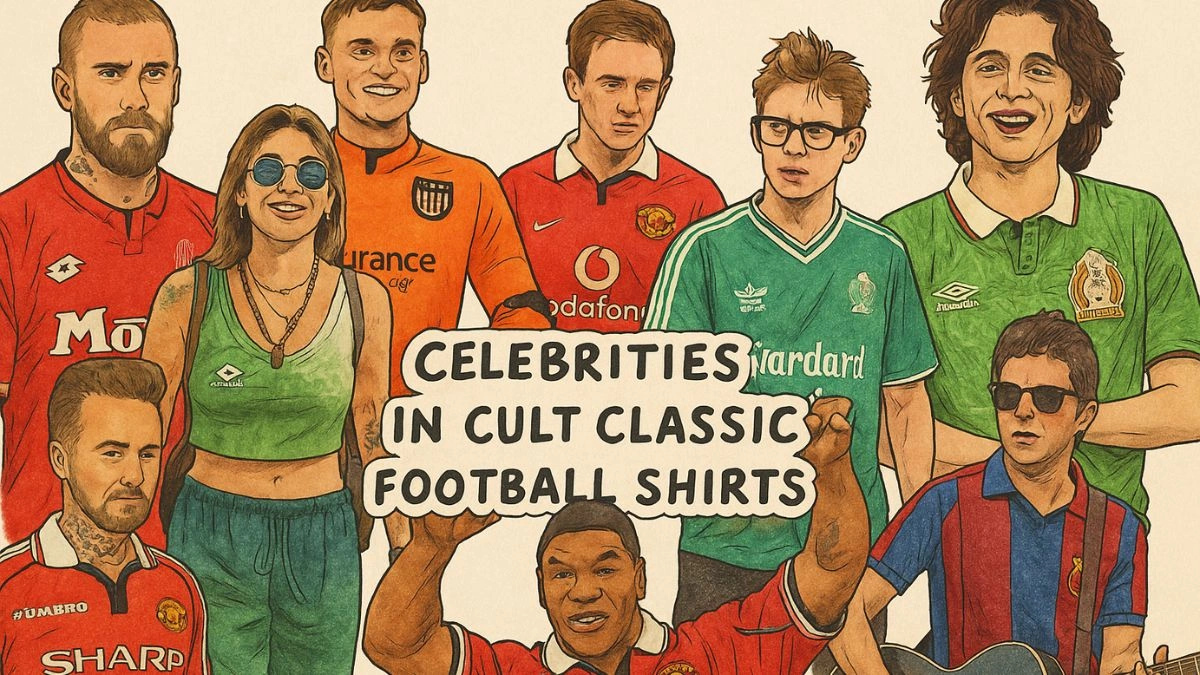
In many cities the clearest style signal isn’t leather or logos, it’s a football shirt. A name across the chest can feel like a band, a color block can feel like a memory. When famous people reach for a kit, they aren’t just playing dress-up. They’re choosing an era.
Travis Scott sat courtside in Tokyo Verdy’s 1993 green and black with the Yomiuri wordmark loud across the front. Timothée Chalamet smiled through interviews in Mexico’s 1994 Umbro. Drake pulled on Arsenal’s burgundy 2005–06 from the final season at Highbury. Snoop Dogg kept it classic with Ajax’s red center stripe.
Noel Gallagher walked on stage in Barcelona’s early 1970s home, guitar low. Kim Kardashian ran Los Angeles errands in Roma’s 2001–02 Diadora glow. Macaulay Culkin went vintage West Ham in the Dr. Martens claret. Morrissey chose Chivas red. Justin Bieber backed Milan’s Motta era from the mid 1990s. Edward Norton wore Manchester United’s Sharp 1996–97 with the collar up, a Beckham nod on Halloween nonetheless.
The pull is design first. Early 1990s graphics were loud and hand-cut. Mid-2000s shirts leaned clean and heavy. Sponsors became part of the picture, from Motta and O2 to Dr. Martens. The result feels closer to record sleeves than training tops. The street has a vocabulary for it now. Blokecore. Archive drops. Tunnel fits.
Kits also travel well because they carry stories. Clubs are civic history in shorthand. National teams are family debates made visible. When a celebrity puts on a classic, the story moves rooms. A J‑League relic shows up at an NBA game and a niche shirt becomes the mood of the night. A Roma throwback turns a sidewalk into a runway and suddenly Diadora spikes in search.
Why these shirts still travel
There is a practical piece to this too. These designs are camera-ready. Strong blocks frame faces. Logos sit right in the center of a shot. Collars do their own acting, from United’s thick 1990s cuts to Mexico’s tidy green trim. Old shapes read well on phones and billboards. Context finishes the work. Drake’s Highbury burgundy points to a goodbye, not just a color. Gallagher’s Barcelona stripes recall a pre-super-club era. Culkin’s West Ham nod is East London in one glance.
Money chases attention. When interest jumps, asking prices do too. Clean originals and sharp reissues often run a few hundred dollars in the United States, and the truly scarce pieces climb higher. That rise has stirred arguments about access, yet it’s also pushed new eyes toward smaller clubs and long-quiet sponsors.
The ten images in this series read like a traveling museum. A Japanese power in neon green. A Mexico World Cup print that looks engraved. A North London farewell in burgundy. A Roman glow. A Manchester collar that refuses to lie flat. The common language is memory, stitched at the factory and renamed by whoever wears it next.
The lesson is simple. Shirts don’t age out. They age into meaning. When celebrities pull them from archives and closets, they aren’t just styling a look. They’re reopening a door. The rest of us decide if we want to step through.